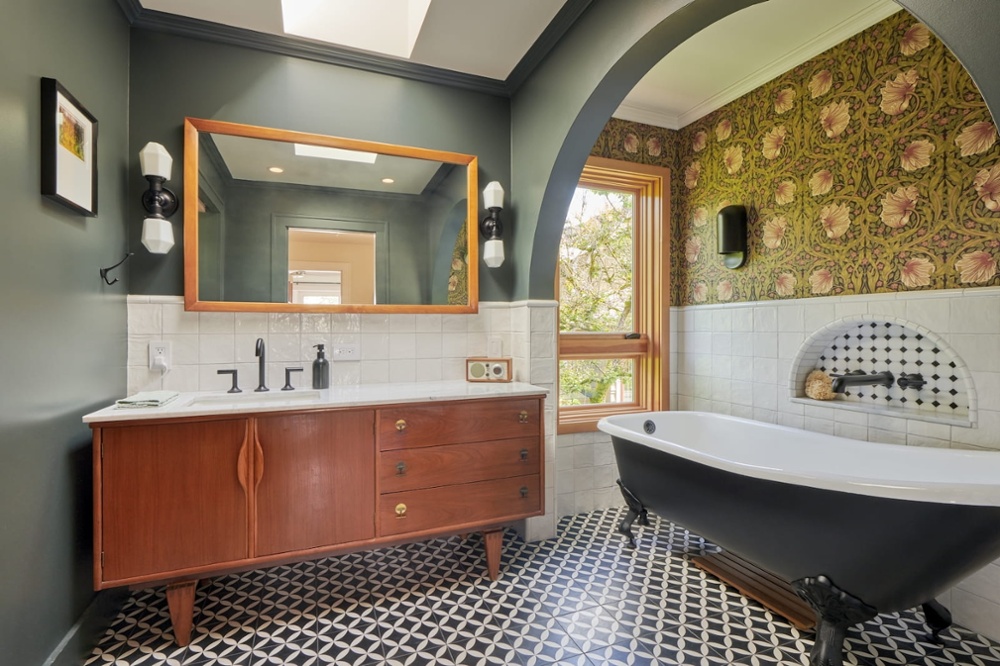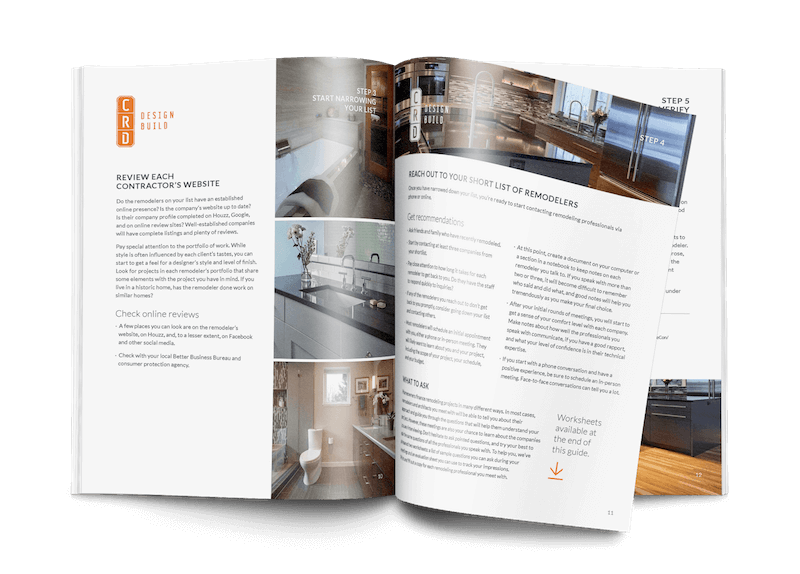
The walls of your house say a lot about you. And they are a way of emphasizing the style you have chosen for any room, giving warmth and, above all, giving them personality. We aren't just talking about paints, mirrors, or sheets that can decorate your walls, but the material they are made of or covered with. Of course, the smooth walls, painted in a single color, are a safe bet. When you're going through a remodel your walls are like a blank canvas for wall coverings and wall décor. If you want to customize your space beyond wall art or wall decals, consider using one of these wall-covering ideas. You will completely change your look!
A Classic That Never Fails: Wallpaper
In recent years, we have seen how wallpaper has made a strong comeback to the fore. Although it may not have gone away completely, the truth is that it now comes with more delicate designs, with maximum attention to detail and soft colors that promise calm spaces. Botanicals are the most popular for their timelessness and the natural, calming effect they offer.
Back then, the interior walls of an entire room would be covered in wallpaper. Now wallpaper helps give prominence to a single wall, being the most popular and least overloaded option, taking into account the incredible strength of its designs. In bedrooms, for example, it is common to place it on the headboard wall, framing the bed.
If your style changes often, we have the perfect solution: peel-and-stick wallpaper. This way you won't have to be stuck with the bold design of the animal print paper you impulsively put up in your nursery. We always support going after a bold design for your feature wall and with the option of temporary wall coverings, having a wall with a trendy color is a low commitment.
Much More Than an Exterior Material: Exposed Brick
The exposed brick wall still makes the front page of decoration magazines. With a combination of exposed brick and reclaimed wood, you can bring a sense of urban industrial design to your interior. Whether in a small or large space, leave a whole section of exposed brick wall and reconnect with this raw material! If the wall does not originally boast that finish, you can recreate it using a faux brick wallpaper or vinyl that imitates it with great realism.
Many older Seattle homes have a chimney stack running through the middle of the home. We've had clients request to leave the stack intact and exposed after a remodel to add a bit of industrial character to their space. The chimney stack goes from being hidden behind drywall to a design focal point in any space. If you don't have a brick wall to expose then a brick fireplace surround can add the same effect to your living space when paired with open beams and lush house plants.
When Warmth Rules: Wood Paneling
One way to give personality to your house and to be able to do without any decoration is to cover the walls with wood. Which one? Well, it depends on the effect you're going for. The darker woods, which are generally noble, such as walnut, wenge, or ipe, are perfect for modern and sophisticated spaces.
On the other hand, if you are looking for more light, it is preferable to opt for other lighter woods such as oak, ash, or birch. If you want a more rustic or Scandinavian effect, leave the wood natural, treated, but unvarnished.
In any case, whatever option you choose, wooden walls, in addition to visual warmth, will act as insulation, both thermal and acoustic, and will raise the level of any room. A tip: do not place it on the entire wall. Assign it to a space that you want to highlight.
Beyond The Surface: Wood Look Tiles
The new designs of porcelain tiles have become a resource for decorating walls. Beyond bathrooms and kitchens, this material is conquering new rooms thanks to the extremely successful finishes it achieves. But this is not the only reason for its success. New designs also help, with grooved surfaces that mimic carved wood and bring style and beauty to any wall. They are perfect for achieving a very warm effect in any environment with a resistant and timeless material.
Timber effect tiles work especially well in the bathroom. Since most surfaces need to be waterproof, wall tiles with a natural wood look is the best way to add warmth in a safe way.
Warm Industrial Effect: Microcement
Although we have always associated concrete or cement walls with industrial spaces, these materials have found a worthy heir in microcement that contributes to creating that factory effect so typical of the industrial style, but with a more delicate and elegant nuance.
Concrete can be a costly addition to any design. Microcement is when you add a thin coating of cement to a home's surface to create an industrial aesthetic. Because it only requires a thin coat, it is budget-friendly and can be applied to the surface of floors, countertops, and walls. If you are looking for unique wall coverings then we suggest covering an entire wall with microcement to add some visual interest to your modern space.
Elegant Paneling to Dress the Bottom of a Wall: Wainscoting
Wainscoting is another type of wall covering that has made a comeback, but with a more refined design. In fact, now its design is more simplified, making it a popular wall-covering idea for modern homes.
Wainscoting refers to the application of wooden panels or moldings to the lower portion of a wall, traditionally a third of the way up the wall, today it comes about halfway up the wall. There are various styles of wainscoting, ranging from traditional panel designs to sleek, contemporary styles.
Wainscoting is a great addition to a powder bath to make a statement or add dimension to a small space. It doesn't always have to be white either as long as the color matches the wallpaper. Also, be sure that the wainscoting matches the moulding in your space.
If you don't like the look of wood you can opt for tile. Choose one style of tile for 1/3 to 1/2 of the bottom portion of your wall then use a slim tile as the edge.
3D Decorative panels
Whether its decorative panels in leather, glass, bamboo, natural stone, porcelain, or ceramic, the 3D decorative panels break up the monotony of the "usual tile" through a combination of geometric shapes, colors, and thicknesses beyond any standard. This solution, dedicated to the bravest experimenters, can really transform an environment into a sanctuary of design.
3D panels are often used for modern designs. You'll see them paired with architectural lighting and vaulted ceilings, though neither is required to make 3D panels look good in any space. If you have a large wall, especially in a hallway or entrance, you can use 3D paneling to add interest and texture to a space that would otherwise require a lot of wall décor to create a dramatic effect.
Tips For Choosing Wall Coverings
In any case, we know that each person and each home is a world apart. For this reason, we'll give you all our best tips on how to choose wall coverings. Take a look at them so you can make a clear decision.
1. THINK ABOUT THE AESTHETIC YOU ARE LOOKING FOR IN YOUR HOME.
What aesthetics are you looking for? The technical characteristics of the materials you choose (general quality, resistance, maintenance, etc.) will undoubtedly be important, but above all, they must fit into your home. If not, you might find that you have good quality materials, yes, but you're not entirely satisfied with the over-all theme. And that's the last feeling anyone wants after an expensive renovation, right?
2. CONSIDER MAINTENANCE NEED
Aesthetics and durability are the two characteristics you must combine in some way. For example, if you opt for wood, you should not forget that it requires intensive maintenance and that it is normally a less durable material. Even tile will need to be re-grouted every decade or so.
3. THE IMPORTANCE OF COLOR
Do not underestimate the importance of colors: light colors will help your home have more light and give a feeling of spaciousness. On the contrary, dark ones are moody, bold, and, perhaps, aesthetically pleasing. In addition to those feelings, you should also consider how the colors you have in mind will fit with your chosen materials i.e. pairing the right colors with the red tone of exposed brick walls.
4. THERMAL AND ACOUSTIC COMFORT
Choosing the wall covering also implies considering its impact, which is significant, on comfort and well-being. Some materials, such as stone tile, offer high thermal comfort, while others, such as textiles and wood, guarantee greater acoustic comfort.
We have given you some of the best wall-covering ideas (although there are many more) and how to choose them. Now you decide: which cover do you choose for your walls? Get in touch with our home-services department today to take the next step towards giving your walls life!
Wood-look Tile
Detail Through Wallpaper
Two-tone Pop of Color
Textured Wallpaper
Wainscoting
Decorative Wall Paneling
Guide to Hiring a Remodeler
This comprehensive guide walks you through all the steps of choosing who will design and build your project, vetting remodeling companies, and ensuring that you have the best experience.



